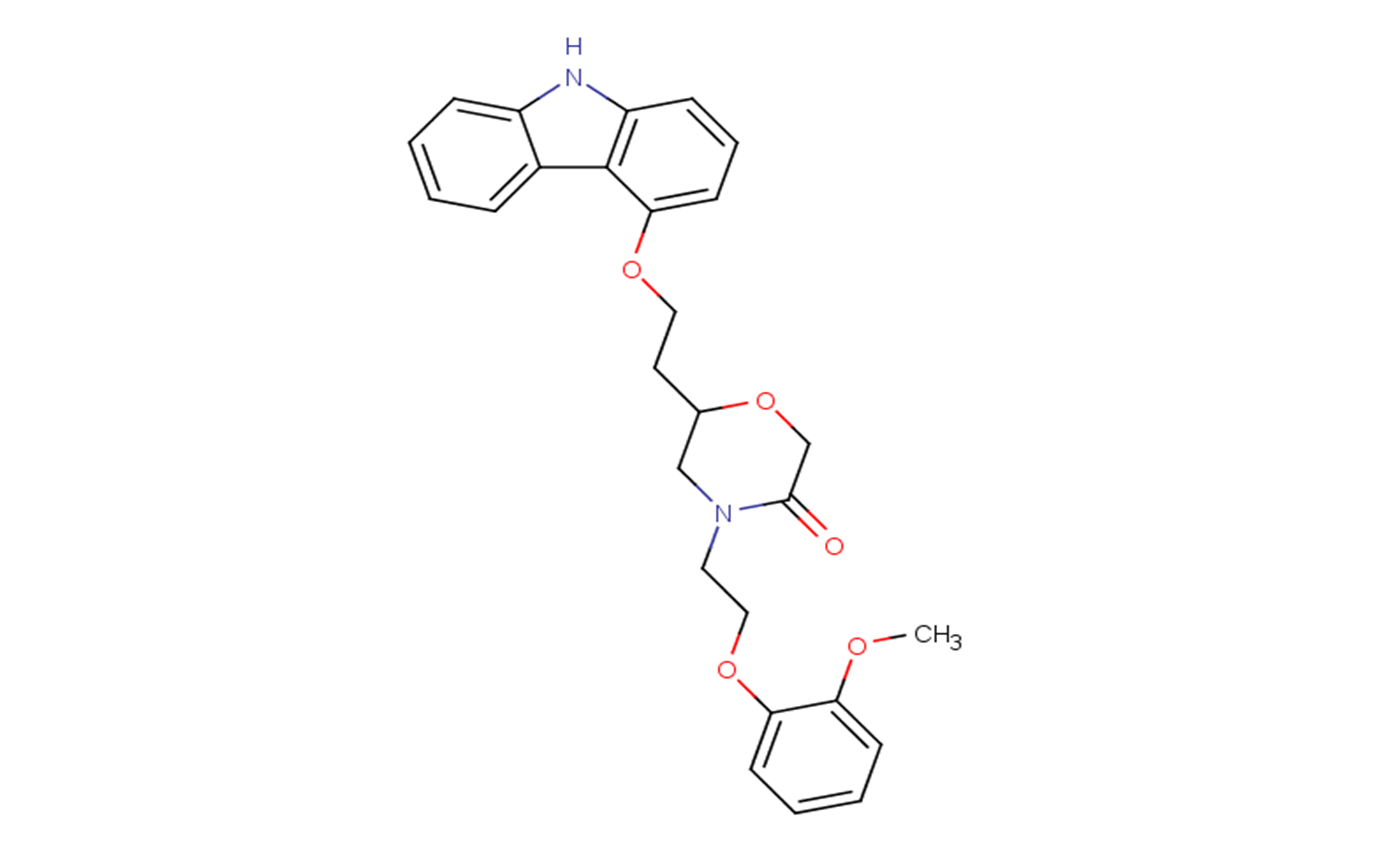
Homo-VK-II-36
CAS No. 1479049-35-8
Homo-VK-II-36( Homo VK II 36 | HomoVKII36 | Homo-V-II-36 )
Catalog No. M23634 CAS No. 1479049-35-8
Homo-VK-II-36 is a carvedilol analogue that acts by inhibiting store-?overload-induced calcium release through the RyR2 channel.
Purity : >98% (HPLC)
 COA
COA
 Datasheet
Datasheet
 HNMR
HNMR
 HPLC
HPLC
 MSDS
MSDS
 Handing Instructions
Handing Instructions
| Size | Price / USD | Stock | Quantity |
| 5MG | 177 | In Stock |


|
| 10MG | 282 | In Stock |


|
| 25MG | 480 | In Stock |


|
| 50MG | 691 | In Stock |


|
| 100MG | 972 | In Stock |


|
| 200MG | Get Quote | In Stock |


|
| 500MG | Get Quote | In Stock |


|
| 1G | Get Quote | In Stock |


|
Biological Information
-
Product NameHomo-VK-II-36
-
NoteResearch use only, not for human use.
-
Brief DescriptionHomo-VK-II-36 is a carvedilol analogue that acts by inhibiting store-?overload-induced calcium release through the RyR2 channel.
-
DescriptionHomo-VK-II-36 is a carvedilol analogue that acts by inhibiting store-?overload-induced calcium release through the RyR2 channel.
-
In Vitro——
-
In Vivo——
-
SynonymsHomo VK II 36 | HomoVKII36 | Homo-V-II-36
-
PathwayOthers
-
TargetOther Targets
-
RecptorRyR2 channel
-
Research Area——
-
Indication——
Chemical Information
-
CAS Number1479049-35-8
-
Formula Weight460.53
-
Molecular FormulaC27H28N2O5
-
Purity>98% (HPLC)
-
SolubilityDMSO:10 mM
-
SMILESCOC1=CC=CC=C1OCCN2CC(OCC2=O)CCOC3=CC=CC4=C3C5=CC=CC=C5N4
-
Chemical Name——
Shipping & Storage Information
-
Storage(-20℃)
-
ShippingWith Ice Pack
-
Stability≥ 2 years
Reference
1.Zhang JZ, McLay JC, Jones PP. The arrhythmogenic human HRC point mutation S96A leads to spontaneous Ca(2+) release due to an impaired ability to buffer store Ca(2+). J Mol Cell Cardiol. 2014 Sep;74:22-31. doi: 10.1016/j.yjmcc.2014.04.019. Epub 2014 May 5. PubMed PMID: 24805197.
molnova catalog



related products
-
DHBP
DHBP is an WalKR TCS activator. It works via targeting walk and selectively promoting the lysostaphin-induced lysis activity of the Newman wild-type strain.
-
WUN29654
WUN29654 is a Thalidomide analog and CRBN modulator,has an IC50 of 3.5 μM and a Ki of 0.98 μM.
-
MAC-545496
MAC-545496 is a glycopeptide-resistance-associated protein R (GraR) inhibitor, is an antivirulence agent.



 Cart
Cart
 sales@molnova.com
sales@molnova.com


